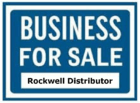WESCO Q2 … As Expected, But Input On Going Forward

Last week’s WESCO Q2 earnings call shed some light on Q2 performance but, perhaps of greater interest, insight into how it will be structured and reporting in the future.
Q2 financial performance was “muddied”, from a communications viewpoint, with various acquisition and integration costs as well as the aggregation of 9 days of Anixter performance. The combination makes some of the sales and operating profit information non-comparative for electrical distributors.
But there were some interesting WESCO “legacy” business trends shared on the call and in the presentation.
Q2 Business insights
- Overall, results exceeded expectations (but remember, expectations going into Q2 for pretty much everyone were pretty low due to the unknown of COVID in April.)
- Feels that they outperformed the market and backlog grew (but did backlog grow due to project delays, more projects bid and closed or a higher close ratio?)
- Growth in the utility business
- For Q3, to date, -8% vs 2019 (but remember, this is not solely industrial, or contractor so may not be appropriate comparable for other distributors or for manufacturers unless serve all of WESCO customer types.)
- Monthly organic sales for WESCO were -16% in
April, -10% in May and -13% in June vs 2019. (This includes utility, which
was up, hence other segments down more. Interesting that June was down more
than May given that our COVID survey and anecdotal feedback from many is that
June was better than May. Perhaps the automotive and/or oil and gas slowdown
have further impacted WESCO?)
- Overall, for the quarter, WESCO in US down 12%.
Canada down 17%
- Industrial in US down 21%
- Construction down 16% in US (project delays were mentioned with backlog up 17%)
- Utility in US was up 6% (Utility could benefit from new residential developments, a little from new hook-ups for new homes, grid modernization and continued grid development in California.)
- Commercial, institutional and government was down 5% in the US
- Sequentially WESCO is -13% for April, +9% for May and +5% for June (again, wonder why the slowdown given the industry continued to perform or this could be a business mix issue.)
- Overall, for the quarter, WESCO in US down 12%.
Canada down 17%
- WESCO gross margin is 18.9%, Anixter was 20.3%
- WESCO reported that global account bidding activity continued to be active (however, that is bidding vs closing new opportunities. Feedback from other distributors is that quotation activity, in general, is strong but many can’t tell if this is because purchasing has the time to do the RFPs or if, in the case of projects, they are funded projects.)
- Planning to reinstate reduced compensation on October 1 for legacy WESCO employees as compensation was reduced between 12-25% effective May 1.
- Investing much in digital to pull together the two ERP systems and become more “digital”.
Looking forward
- Interestingly, through the due diligence and integration
process WESCO has identified an opportunity to improve its margin through insights
gathered from Anixter’s pricing processes. They will be adopting some of this
moving forward. The Anixter “margin differential” is attributed to:
- Being leader in communications and security (Anixter historically is known for value-added services in this area. Will be interesting to see if WESCO can build this into its culture.)
- Being leader in wire and cable business with strong gross margins which WESCO hopes to learn from.
- Ability to view Anixter’s Utility business to “compare” as now they have the 2 utility industry leaders under one ownership.
- The business will operate with 3 business units
moving forward:
- Electrical and Electronic Solutions (EES) – essentially WESCO Electrical + Anixter Electrical (HD Supply Power Solutions – old Hughes Supply electrical, Edson, More) + Anixter wire and cable
- Communication and Security Solutions (CSS) – Anixter’s NSS business + WESCO Datacom (CSC) + WESCO A/V
- Utility and Broadband Solutions (UBS) – Utility group of both companies + outside plant (WESCO TVC) and Anixter Broadband
- Non-resi construction is about 25% of the new company (essentially, electrical contractor market, so, a little more than $4B globally.)
- Focused on cross selling business units to end-customers
- In their presentation WESCO identified 12
secular trends that they feel will benefit them. These include:
- Remote connectivity
- Supply Chain Relocation
- Connected Real Estate
- Increased Security
- Secure Networks
- Data Center Capacity
- Mobility and Accessibility
- Electrification
- LED Adoption
- Communications
- Utility Grid
- IoT and Automation
Some of these may be areas that others seek to further focus on in their geographic area.
- In considering planning cost synergies, only 20% is projected to come from Field Operations. The remainder is G&A, corporate overhead, and supply chain issues. (This should help WESCO maintain field support and sales initiatives.)
The company appears to have a sense of urgency in integrating the two companies and achieving / exceeding planned synergies. Many people have been devoted to the initiative and WESCO brought in a “major” consulting firm to help them with the integration. The different ERP systems of WESCO and Anixter represents some longer-term questions of “which one” but, in the interim, WESCO has deployed “apps” to extract information so the company can be more data oriented.
Overall WESCO’s performance seemed to mirror much of what is going on in the market with the Utility segment helping to mitigate too much sales negativity given the nature of the Utility market and those MRO contracts. Going forward manufacturers and distributors in the electrical industry can consider WESCO’s EES segment more of an “electrical” distributor and focus on the business mix within EES (if they share), however, on the call WESCO shared that only 25% of their business is electrical contractor.
If you compete against WESCO, how are you performing against them? Are they a frequent competitor or focused on selected opportunities, utility and global accounts?






















